Hanging air purifying plants are becoming increasingly popular as a stylish and effective way to improve indoor air quality. These plants not only add a touch of greenery to your home but also remove harmful pollutants from the air, creating a healthier living environment.
From the well-known Spider Plant to the exotic Peace Lily, various hanging air purifying plants offer unique air-cleaning capabilities. This article delves into the benefits, placement, and care of these remarkable plants, empowering you to make informed choices for your indoor oasis.
Popular Hanging Air Purifying Plants
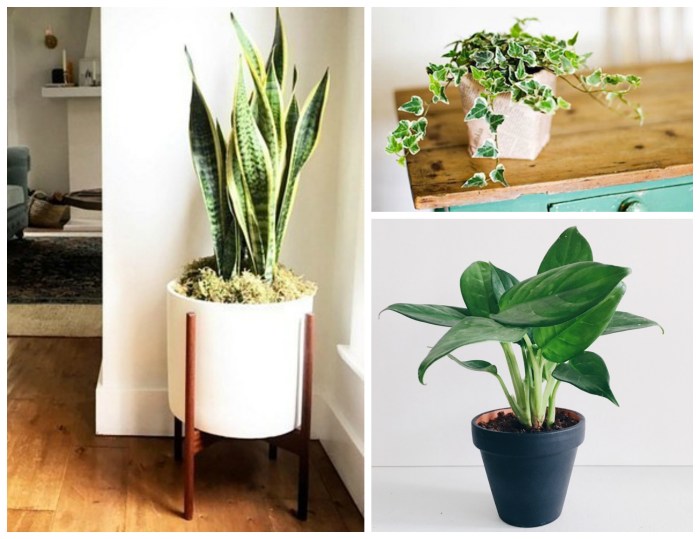
Hanging air purifying plants are an excellent way to improve indoor air quality and add a touch of greenery to your home. These plants can help remove harmful toxins from the air, including formaldehyde, benzene, and trichloroethylene. They can also help reduce dust and allergens, making them ideal for people with allergies or asthma.
There are many different types of hanging air purifying plants available, each with its own unique benefits. Some of the most popular hanging air purifying plants include:
- Spider plant( Chlorophytum comosum): Spider plants are easy to care for and can tolerate a wide range of light conditions. They are also effective at removing formaldehyde and benzene from the air.
- Peace lily( Spathiphyllum wallisii): Peace lilies are known for their beautiful white flowers and their ability to remove formaldehyde, benzene, and trichloroethylene from the air. They prefer low to medium light conditions.
- Snake plant( Sansevieria trifasciata): Snake plants are very low-maintenance plants that can tolerate a wide range of light conditions. They are also effective at removing formaldehyde, benzene, and trichloroethylene from the air.
- English ivy( Hedera helix): English ivy is a fast-growing plant that can quickly fill a space. It is effective at removing formaldehyde, benzene, and trichloroethylene from the air. It prefers low to medium light conditions.
The following table compares the four hanging air purifying plants discussed above:
| Plant Name | Purification Abilities | Maintenance Requirements | Ideal Placement |
|---|---|---|---|
| Spider plant | Formaldehyde, benzene | Easy to care for | Low to bright indirect light |
| Peace lily | Formaldehyde, benzene, trichloroethylene | Moderate | Low to medium indirect light |
| Snake plant | Formaldehyde, benzene, trichloroethylene | Very low-maintenance | Low to bright indirect light |
| English ivy | Formaldehyde, benzene, trichloroethylene | Moderate | Low to medium indirect light |
Benefits of Hanging Air Purifying Plants

Indoor air quality is crucial for our health and well-being. Air purifying plants offer a natural solution to improve air quality and reduce pollutants, providing numerous health benefits.Studies have demonstrated that hanging air purifying plants can significantly reduce levels of harmful indoor pollutants such as benzene, formaldehyde, and trichloroethylene.
These pollutants can cause various health issues, including respiratory problems, allergies, and even cancer.Research conducted by NASA’s Clean Air Study found that certain plants, such as spider plants, peace lilies, and English ivy, were effective in removing up to 87% of airborne toxins within 24 hours.
Another study published in the Journal of Environmental Science and Health found that hanging air purifying plants in hospitals reduced the number of airborne bacteria by up to 60%.
Health Benefits
* Improved air quality
- Reduced exposure to pollutants
- Reduced risk of respiratory problems
- Alleviated allergies
- Improved mood and cognitive function
Placement and Care of Hanging Air Purifying Plants
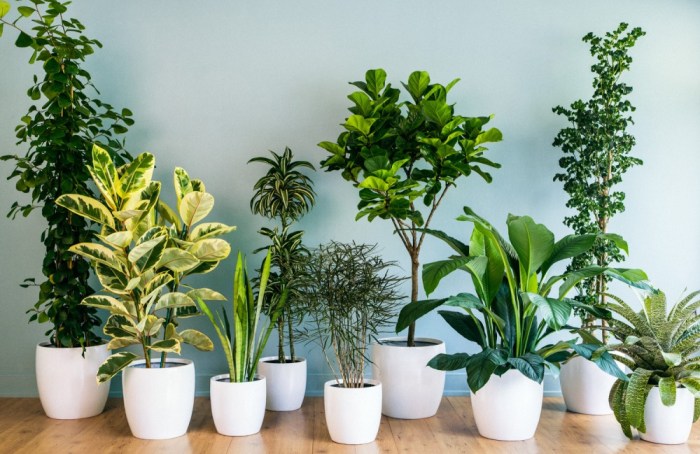
Hanging air purifying plants can greatly enhance indoor air quality and create a healthier living environment. To ensure optimal performance and longevity of these plants, proper placement and care are crucial.
Placement Considerations
- Light Requirements:Most hanging air purifying plants prefer bright, indirect light. Avoid placing them in direct sunlight, as this can scorch their leaves.
- Room Settings:Consider the size and layout of the room when choosing a hanging air purifying plant. For smaller rooms, opt for smaller plants, while larger rooms can accommodate larger specimens.
- Air Circulation:Place hanging air purifying plants in areas with good air circulation to prevent stagnant air and promote airflow.
Environmental Requirements
- Temperature:Most hanging air purifying plants thrive in temperatures between 65°F and 75°F (18°C and 24°C).
- Humidity:Some hanging air purifying plants, such as ferns and spider plants, prefer high humidity. Misting them regularly or using a humidifier can help increase humidity levels.
Plant Care Table
The following table provides specific care guidelines for common hanging air purifying plants:
| Plant | Watering | Fertilizing | Pruning |
|---|---|---|---|
| Spider Plant | Water when the soil surface feels dry to the touch. | Fertilize monthly during the growing season. | Remove dead or yellowed leaves as needed. |
| Fern | Water regularly, keeping the soil moist but not soggy. | Fertilize lightly every few months. | Trim off brown or damaged fronds. |
| Pothos | Water when the soil feels dry about halfway down the pot. | Fertilize every few weeks during the growing season. | Prune as needed to maintain desired shape. |
| Snake Plant | Water sparingly, allowing the soil to dry out completely between waterings. | Fertilize every few months during the growing season. | Remove dead or damaged leaves. |
DIY Hanging Air Purifying Plant Arrangements
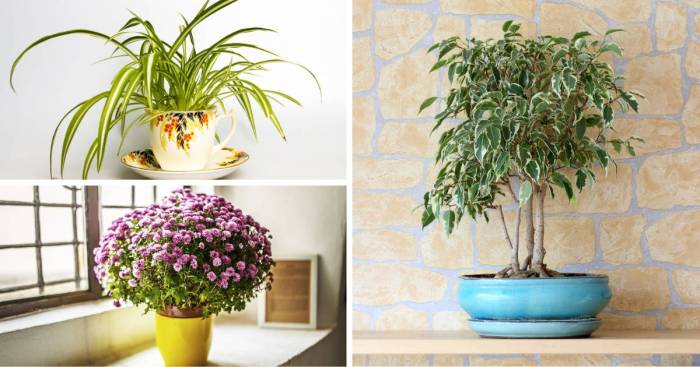
Creating visually appealing hanging arrangements with air purifying plants can elevate the aesthetic of your space while improving air quality. Here’s a step-by-step guide to help you craft your own unique and functional hanging plant arrangements:
Materials and Techniques
Materials:
- Air purifying plants (such as spider plants, pothos, or peace lilies)
- Hanging planters or baskets
- Hanging hooks or wires
- Potting soil
- Decorative items (optional)
Techniques:
- Macrame
- Weaving
- Knotting
- Braiding
Step-by-Step Guide
Step 1: Choose Your Plants
Hanging air purifying plants offer a natural way to improve indoor air quality and add a touch of greenery to your home. For those looking to quickly fill space with lush foliage, fast growing trailing plants indoor are an excellent choice.
These plants, such as pothos , ivy, and spider plants, can quickly cascade down from hanging baskets or pots, creating a verdant display. By incorporating these fast-growing trailing plants into your hanging air purifying plant collection, you can enjoy the benefits of both air purification and a vibrant, living décor.
Select air purifying plants that complement your space and personal style. Consider the size, shape, and growth habits of the plants to ensure they fit well in your hanging arrangement.
Step 2: Prepare Your Planters
Hanging air purifying plants can enhance indoor air quality by removing harmful toxins and pollutants. If you’re looking for low-maintenance options, consider exploring the easiest hanging plants indoor . These plants thrive in hanging baskets and require minimal care, making them ideal for busy individuals or those new to plant care.
By incorporating hanging air purifying plants into your home, you can enjoy both the aesthetic appeal and the health benefits they offer.
Fill your hanging planters with potting soil. If using macrame or weaving techniques, line the planters with sphagnum moss or a plastic liner to prevent soil from spilling out.
Step 3: Plant and Hang
Hanging air purifying plants can bring both beauty and health benefits to your home. For those looking for the best indoor plants to hang, good indoor plants to hang can help improve air quality while adding a touch of greenery to your space.
Whether you prefer the lush foliage of a spider plant or the trailing vines of a pothos, there are plenty of options to choose from when selecting hanging air purifying plants.
Plant your air purifying plants in the prepared planters. Gently remove them from their nursery pots and loosen any root-bound roots. Hang your planters securely using hooks or wires.
Step 4: Add Decorative Touches
Personalize your hanging arrangements with decorative elements such as ribbons, beads, or colorful twine. You can also add small figurines or other objects that complement the plants.
Air Purifying Plants for Specific Concerns
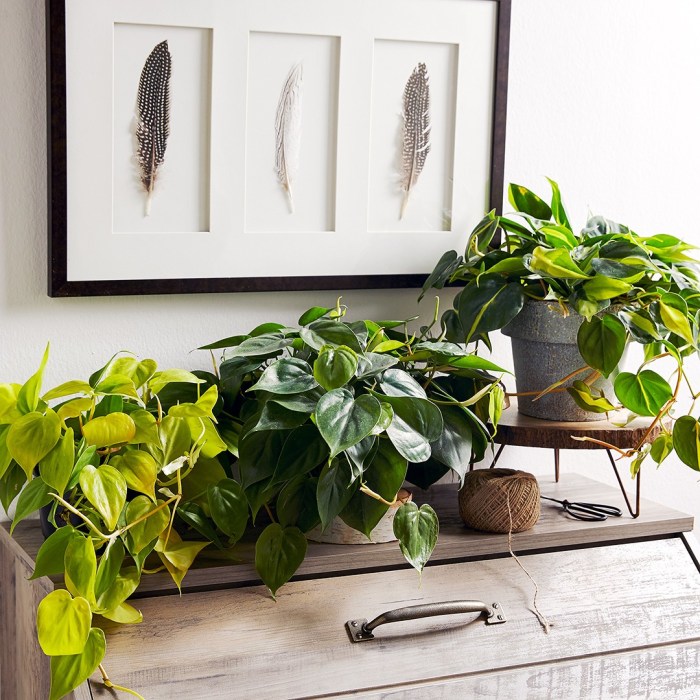
Hanging air purifying plants can be particularly effective in removing specific pollutants or addressing certain indoor air quality concerns. Here are some of the best plant choices for different issues:
Pet Odors
- Snake Plant: Absorbs ammonia and other compounds associated with pet urine.
- Peace Lily: Neutralizes odors from pet waste and other sources.
- Golden Pothos: Removes formaldehyde and other pollutants that can contribute to pet odors.
Mold, Hanging air purifying plants
- Boston Fern: Releases moisture into the air, which can help prevent mold growth.
- Spider Plant: Absorbs formaldehyde and other volatile organic compounds (VOCs) that can contribute to mold.
- Areca Palm: Has a high transpiration rate, which helps to reduce humidity and prevent mold growth.
Smoke
- Snake Plant: Removes formaldehyde and other pollutants found in smoke.
- Peace Lily: Neutralizes odors and removes VOCs that can be released from smoking.
- English Ivy: Absorbs carbon monoxide and other pollutants from smoke.
The scientific mechanisms behind how these plants purify the air vary. Some plants absorb pollutants through their leaves, while others release moisture or chemicals that neutralize odors or inhibit mold growth. By choosing the right plants for your specific concerns, you can improve the air quality in your home and create a healthier environment for yourself and your family.
Final Summary: Hanging Air Purifying Plants
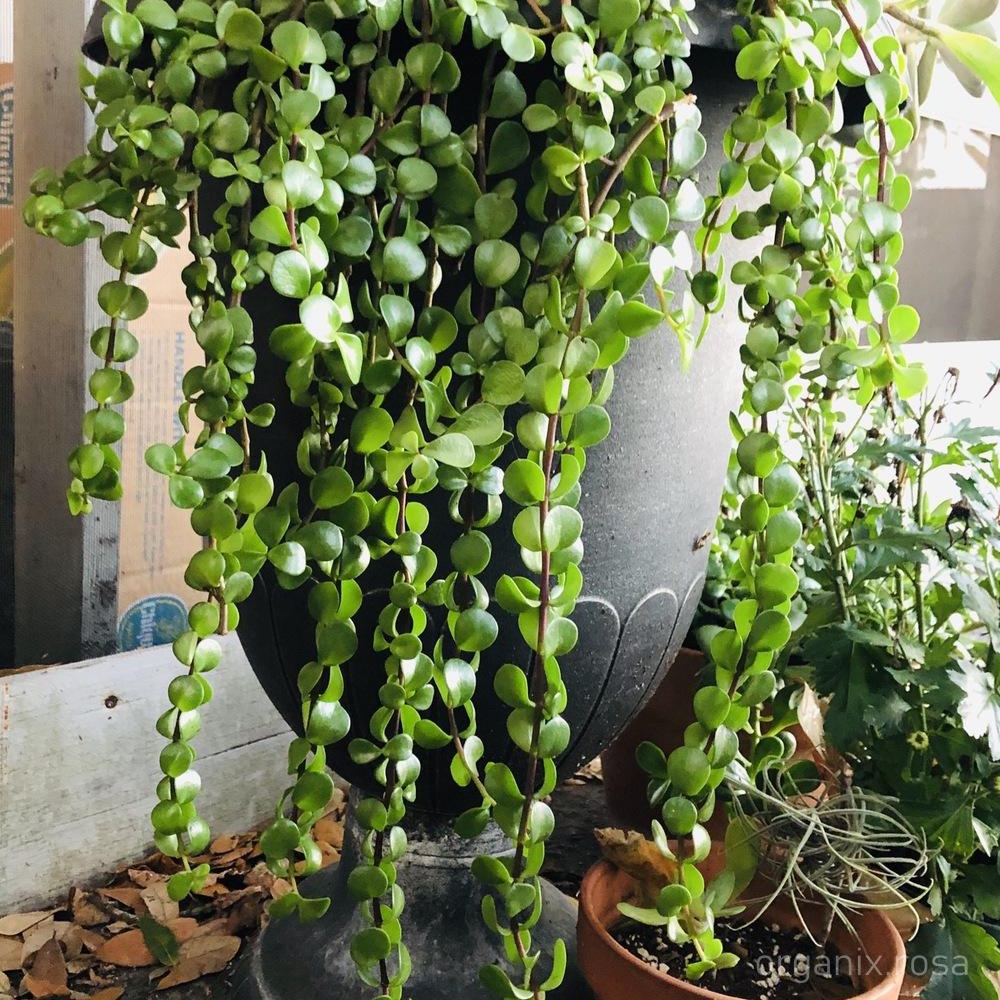
Incorporating hanging air purifying plants into your home is a smart investment in your health and well-being. These plants not only enhance the aesthetics of your living space but also contribute to a cleaner, healthier indoor environment. By understanding their specific needs and care requirements, you can enjoy the benefits of these natural air purifiers for years to come.
FAQ Section
What are the most effective hanging air purifying plants?
Some of the most effective hanging air purifying plants include the Spider Plant, Peace Lily, Snake Plant, and Golden Pothos.
How often should I water hanging air purifying plants?
The watering frequency for hanging air purifying plants varies depending on the type of plant. Generally, water when the soil feels dry to the touch.
Can hanging air purifying plants remove all pollutants from the air?
While hanging air purifying plants can significantly reduce indoor air pollution, they cannot remove all pollutants. However, they can help improve overall air quality and reduce exposure to harmful toxins.